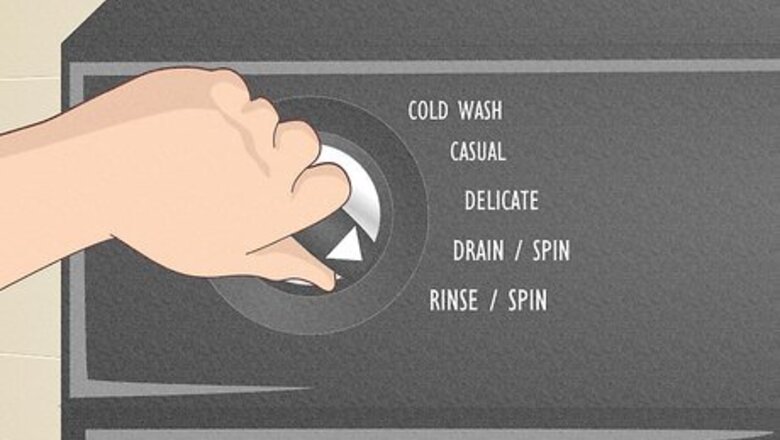
views
- To dry clothes fast with a dryer, clean out the lint screen and vacuum out the dryer vents.
- Split your wet clothes in half, then add a dry towel to the load in the dryer.
- To dry clothes quickly without a dryer, wring them out by hand or with a towel.
- Use a salad spinner to spin out excess water, then hang your clothes to dry on a clothesline or drying rack.
With a Dryer
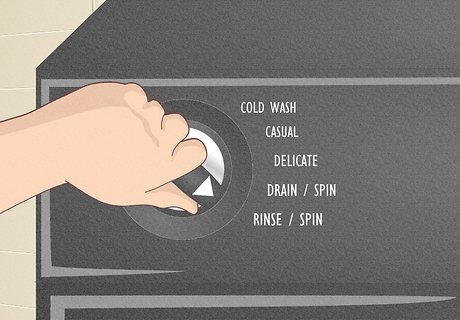
Do an extra spin cycle in the washer. If you're using a washing machine, you can prime your clothes to dry more quickly. Use a high spin setting on your washing machine to remove as much water as possible from your clothes before you even take them from the wash. Although this might take an extra 15 minutes, the excess water that you push out of your clothing will make your garments dry much faster. It’s always a good idea to do a spin cycle on your clothes, even if you don’t need to dry them particularly fast. Drying wet clothes takes much longer and wastes a lot of energy.
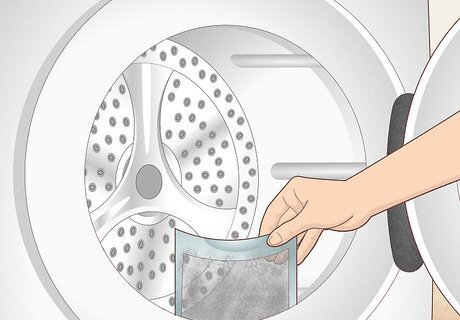
Clean out the lint screen. Take the lint screen out of your dryer and pull off as much lint as you can by hand. If you’ve never fully cleaned your lint screen before, use soap and water to scrub the screen, then rinse it out well. Let the screen dry before putting it back into the dryer. Not sure if you need to clean your lint screen? Try running water through it. If the water pools up and doesn’t go through, it’s time for a scrub.
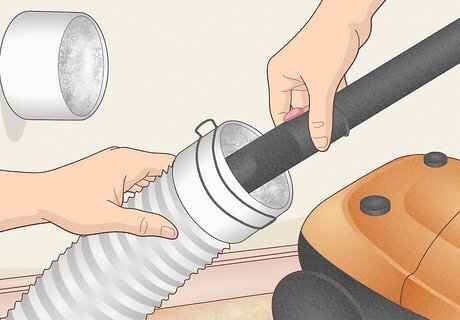
Clean out the dryer vents. Look behind your dryer and find the vents connected to it, which usually lead outside or into a wall. Unhook the vent from the back of your dryer, then use a vacuum or an air compressor to clean out the lint. Finally, hook the vent back up to your dryer before using it again. Try to clean out your dryer vents about once a year at least. A buildup of lint in the vents not only slows down drying time, but it can be a fire hazard, too.

Load fewer items into the dryer. Overloading your dryer will make the clothes dry slower, leading to a longer dry time. If you have a lot of clothes to dry, split them into 2 loads. This will help the dryer work faster, and it will dry your clothes quicker.
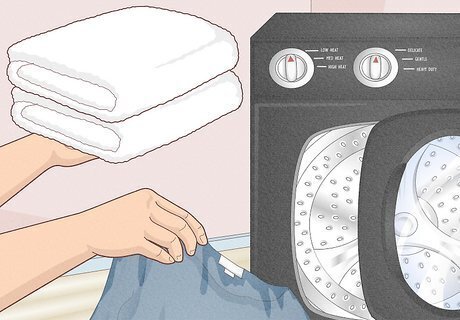
Add a few clean, dry towels to the load. Towels help absorb moisture to speed up dry times. Before starting your dryer, put in 1 to 2 clean towels, then start the cycle. After 15 minutes, open the dryer door and remove the towels, then restart the cycle. Be sure to remove the towels after 15 to 20 minutes. Leaving the towels in too long could actually make your drying time longer, simply because you’ll be adding a now-damp towel to your load. This method is especially effective for drying pants fast. Don’t have any clean towels? Try adding a couple dryer balls instead. These reusable dryer balls help separate garments in the dryer, leading to a faster dry time (plus, they replace the need for dryer sheets, so they’re great for the environment, too).

Pick the hottest setting that your clothes can withstand. A small load on the hottest dryer setting will only take 15 to 20 minutes to dry completely. Check the label on your clothing and make sure they can handle the heat, then crank that knob to the highest setting before starting your dryer. Delicate items, like bras, underwear, and anything made of silk won’t do well with high heat.
Without a Dryer
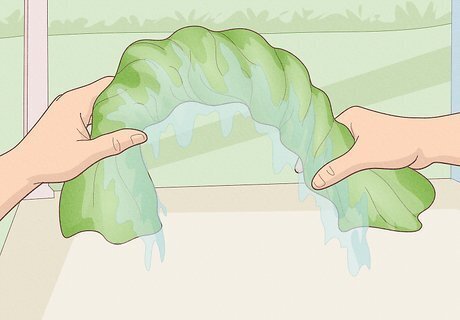
Wring your clothing out before drying. Hold a garment firmly in both hands. Squeeze, twist, and knead the fabric to wrench out as much water as possible. Be careful not to pull too hard, or you might stretch the fabric. If you're inside, wring the water into a sink or tub; if you're outside, you can wring the water directly onto the ground.
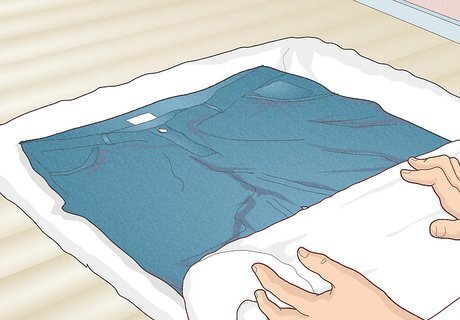
Roll the clothing into a towel to absorb the water. Put down a large, fluffy towel, then lay the wet garment on top. Roll up the towel tightly with the clothing inside. Twist the bundle: start at one end, rolling methodically, and work your way along until the entire towel is tightly twisted. This squeezes excess water out of your clothes and into the towel. If this trick doesn't remove all of the water the first time around, use another dry towel to repeat the twist.
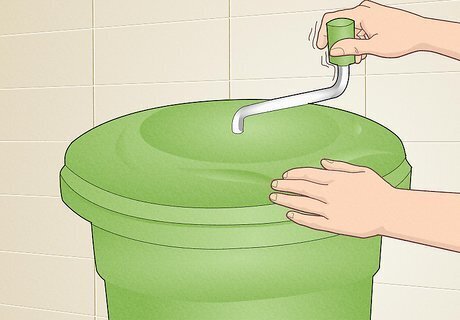
Try salad spinning your clothes. Grab your wet clothing and throw it into a salad spinner, 1 to 2 small garments at a time. Rotate the salad spinner to spin the excess water out and make drying much faster. A salad spinner basically imitates the spin cycle in a washer. Just be sure to rinse it out well before using it on your greens!
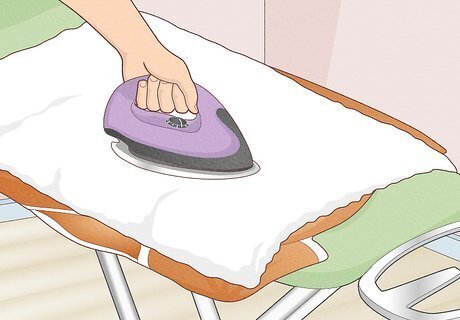
Use an iron and a towel. Lay your wet garment on an ironing board, as if you are going to iron it, but lay a thin towel on top. Iron the towel firmly and thoroughly using a high heat. Make sure to turn the garment over so that you press both sides. The iron-and-towel combination channels some warmth into the fabric, and the towel will absorb some of the moisture. Do not put a hot iron directly onto a wet piece of clothing. This may stretch and damage the fabric. If you use an iron on wet clothing, always use a towel for protection.
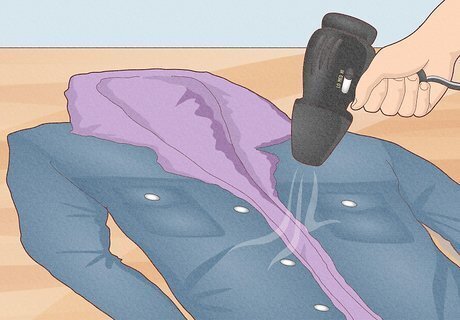
Dry individual garments with a hair dryer. Wring out your clothing and either lay it flat or hang it on a hanger. Hold your hair dryer near the clothing, and move it quickly back and forth, never lingering on one spot too long. Work your way slowly around the entire surface of the garment, front and back, inside and out, until the whole thing is dry. Rotate the garment frequently to dry any pockets, sleeves, and collars. Dry them from the inside and the outside to ensure that you do a thorough job. Use a medium to low heat setting to avoid shrinking any of your clothing.

Use a clothesline or drying rack. A line is usually fastest, but it is not always practical. Make sure to hang each item individually so that it has the space and ventilation to dry quickly. Rotate and flip garments periodically to ensure an even dry. Try setting up your line or rack near a heat source. Hang your clothing a few feet away from a fireplace, radiator, boiler, or furnace. Try setting up your clothing to dry somewhere with a brisk airflow – anywhere air is moving. Hang your clothes by a window (or outside) if there's a breeze, or set up a fan to simulate the airflow inside the house. If you use a drying rack with individual bars, try hanging must-dry items over two bars rather than just one. The more surface area you expose to the airflow, the more quickly a garment will dry.


















Comments
0 comment